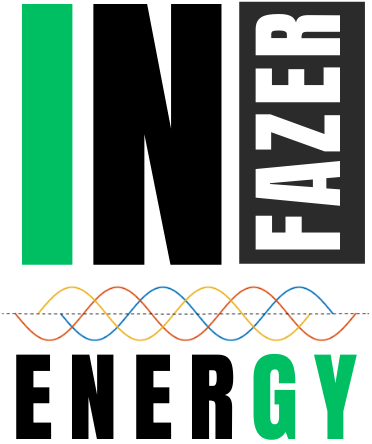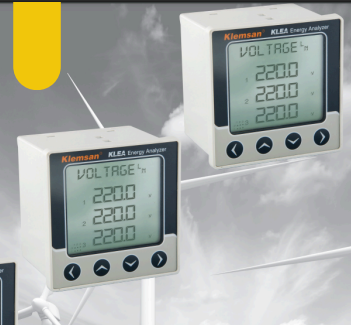ENERGY
MONITORING &
MANAGEMENT
SOLUTIONS
IF YOU CAN’T MEASURE, YOU CAN’TCONTROL ANYTHING.
IF YOU CAN’TCONTROL, YOU CAN’T MANAGE ANYTHING.
INTRODUCTION TO
ENERGY MANAGEMENT
SYSTEM (EMS)
Energy Management Systems (EMS) are integrated
frameworks for monitoring and optimizing energy
consumption efficiently.
Modern industries utilize EMS to achieve regulatory
compliance, reduce costs, and enhance sustainability
initiatives.
Innovative technologies within EMS facilitate real-time
data analysis, empowering organizations to make
informed energy decisions.
KEYCOMPONENTS
OF AN EMS
Key hardware components include sensors
and meters, essential for accurate energy
consumption measurement.
Software applications enable monitoring,
analysis, and control of energy usage,
optimizing operational efficiency.
Robust communication infrastructures
ensure seamless data exchange between
devices, maximizing interoperability and
responsiveness
HOWEMSWORKS
Data Collection Process: Comprehensive data
collection involves gathering real-time energy
usage information from various system
components.
Energy Usage Analysis: Advanced analytical
techniques identify patterns in energy
consumption, revealing inefficiencies and
optimization opportunities.
Optimization Strategies: Control strategies
leverage gathered data to implement dynamic
adjustments, enhancing overall energy
efficiency effectively.
TYPES OF ENERGY MANAGEMENT
SYSTEMS
Industrial EMS: These systems optimize energy use in manufacturing, ensuring
efficiency and compliance with environmental regulations.
Building and Facility EMS: Energy management in commercial buildings
controls lighting and HVAC systems, enhancing comfort while reducing costs,
managing billing, and providing detailed, category-based energy usage.
Residential EMS: These systems enhance energy efficiency by utilizing smart
devices to monitor consumption, manage billing, and provide detailed,
category-based energy usage insights.
BENEFITS OF
IMPLEMENTING AN
EMS
Cost Savings: Implementing EMS fosters significant
cost reductions through improved energy efficiency
and reduced waste generation.
Environmental Impact: EMS implementation
diminishes carbon footprint by optimizing resource
use and supporting sustainable practices across
sectors.
Regulatory Compliance: Energy Management
Systems ensure adherence to evolving regulatory
standards, facilitating certifications and promoting
operational integrity.
ROLE OF SCADA IN
ENERGY
MANAGEMENT
SCADA System Overview: Supervisory Control and
Data Acquisition (SCADA) systems enable remote
monitoring and control of energy infrastructures.
Integration with EMS: SCADA systems enhance
EMS capabilities by providing real-time data for
immediate decision-making in energy
management.
Advantages for Large-scale Management: The
synergy between SCADA and EMS promotes
operational efficiency, reliability, and proactive
maintenance across large installations.
CHALLENGES AND
BARRIERS TO EMS
IMPLEMENTATION
Initial Investment Barrier: High upfront costs deter
organizations from investing in EMS, impacting long-term
energy efficiency gains.
Technological Complexity: The intricate nature of
integrating diverse technologies poses challenges,
requiring specialized training for effective EMS
deployment.
Resistance to Change: Organizational inertia and
employee reluctance hinder the implementation of
advanced energy management strategies within
companies.
LOCAL
CASE STUDIES OF
SUCCESSFUL EMS
IMPLEMENTATION
Industrial Case Study: A manufacturing facility improved
energy efficiency by 30% through a comprehensive EMS
implementation and real-time monitoring.
Residential Success Example: An energy management
system in a residential community led to a 20% reduction
in overall utility costs.
Cross-Sector Benefits: Both sectors see enhanced
energy savings, corporate sustainability, and improved
stakeholder satisfaction from EMS use.
OUR ACTIVITIES
Engineering Activities:
Field cabling – installation services.
Field engineering – commissioning services
Software installation and commissioning services.
MIMIC DIAGRAM
MIMIC DIAGRAM
HOURLY HEAT MAP
It is possible to track the time intervals when energy consumption is intense or
the consumption amount of the company during downtimes from the
company’s consumption map on a daily basis.
GRAPHICAL MONITORING
CATAGORICAL
BASED TRACKING
It enables the determination of different energy
sources or energy consumption categories. For
example, it provides the opportunity to
separate energy categories such as electricity,
water, heating-cooling, and lighting. It helps
determine which areas have higher energy
consumption and which categories should be
monitored primarily. It can help you set
separate goals for each energy category and
track your progress in achieving these goals.
LOCAL
CONSUMPTION COMPARISON
Comparingenergyconsumptiondatahasadirectimpactonenergyefficiency.Understandingwhichprocessesorequipmentconsumesmore
energycanprovidecriticalinformationtodetermineenergy-savingmeasures.Italsoreducesenergycostsandcanpositivelyaffectbusiness
profitability.Reportingthedataobtainedfromthegraphsallowsyoutomonitorandcontrolenergyexpenditures.
CO2 EMISSION CALCULATION
Electricity, natural gas, coal etc.. Carbon footprint calculation and reporting of
energy resources can be done.
FLOWAND FLUE GAS MEASUREMENT
By making flow measurements in compressors the amount of air produced can be monitored instantly or
retrospectively. The changes can be detected by reporting.
O2 and CO can be measured by flue gas measurement and burner maintenance can be determined in advance
before natural gas consumption begins to increase.
PREDICTIVE MAINTENANCE
By measuring vibration in high-power motors, motor bearing failures can be prevented in the future. Alarms can be
created with the limit values determined by ISO 10816 standards, and it offers the opportunity to perform predictive
engine maintenance without major malfunctions.
SOFTWARE FEATURES
Communication with all brand-independent analyzers, meters,
sensors, and instruments for Electricity, Water, Gas,
compressedair consumption,
Modbus, Mbus, IEC62056-21, DLMS-COSEM, MQTT, OPC UA
protocol support
Graphical and tabular consumption reports, sensorconsumptioncomparisonreports
Unit Energy CostReports
Status, conditional status, inefficiency alarms, SMS and Mail
alerts
Mimicdiagramdesigns, webscada feature
CarbonemissionandTEP calculations
Customizedreports
Detailed analyzes by creating virtual devices and derived
values.
Reactive Monitoring
Predictivemaintenance work
NETWORK SCHEMA
SCHEMA FOR BUILDINGS
Reporting:
Reporting of historical data up to the installation of the system as well as automatic
reporting of regularly requested daily, weekly, and monthly can be created.
Definition:
Adding new analyzers, sensors, meters, and virtual devices to the software.
Alarm Creating Configuration,
Invoice Tariff Creation,
Simple Designable Mimic Diagrams.
It allows company officials to make any adjustments they want to make after
training is provided.
Unit Energy Cost Report:
A unit energy cost report is a detailed report on the energy consumption and cost
of a business or facility. This report analyses the cost per production of the energy
consumed for the product in the production phase. The unit energy cost specified
in the report provides a guide for producing products more efficiently. It enables
the evaluation of the relationship between energy consumption and quality
performance of manufactured products. Thus, it helps to optimize processes in
energy consumption.
KEY FEATURES
Electricity consumption analysis
Electricity production analysis (SPP, etc.)
Natural gas consumption analysis
Water consumption analysis
Groundwater usage analysis
Wastewater measurement analysis
Steam consumption analysis
Nitrogen, etc. gas consumption analysis
Fuel consumption analysis
Cooling system analysis
Compressor air production analysis
Product count analysis
Factory A/C consumption analysis
In-factory air quality analysis
Preventive maintenance (vibration,
temperature, water, fire, etc. detection)
Reactive compensation monitoring
ISO 50001
ISO 50001, energy management systems for
international One It is standard.
To countries according by changing together
regulations with industrial facilities ISO50001
certification obtain must remains .
ISO50001 certification in our country taking,
1000 TEP and above It is mandatory.
ENERGY MONITORING & MANAGEMENT SOLUTIONS
Energy Management Systems (EMS) are integrated
frameworks for monitoring and optimizing energy
consumption efficiently.Modern industries utilize EMS to achieve regulatory
compliance, reduce costs, and enhance sustainability
initiatives.
Category: Our Products
Description
Reviews (0)
Be the first to review “ENERGY MONITORING & MANAGEMENT SOLUTIONS” Cancel reply
Shipping & Delivery
Related products
computer SMART III 12
₨402,415.00
CVM-A1500A-ITF-485-ICT2
₨1,450,000.00
CVM-B150-ITF-485-ICT2
₨480,000.00
CVM-C11-FLEX-IN-485-ICT2
₨190,000.00
CVM-C4-ITF-485-ICT2
₨85,000.00
DAV-72D
₨14,000.00
EM-06
₨16,000.00
MYeBOX-1500
₨5,000,000.00














Reviews
There are no reviews yet.